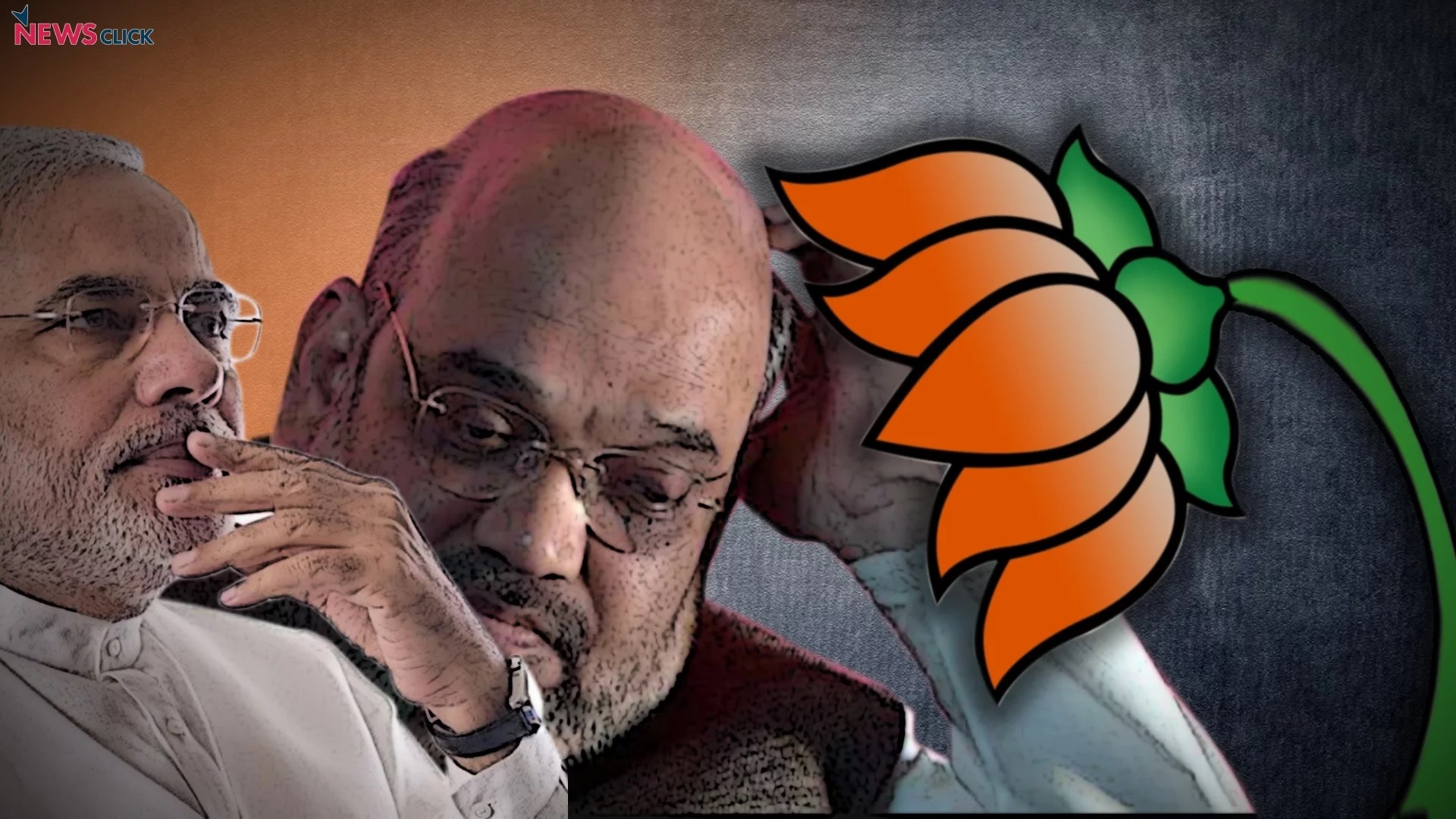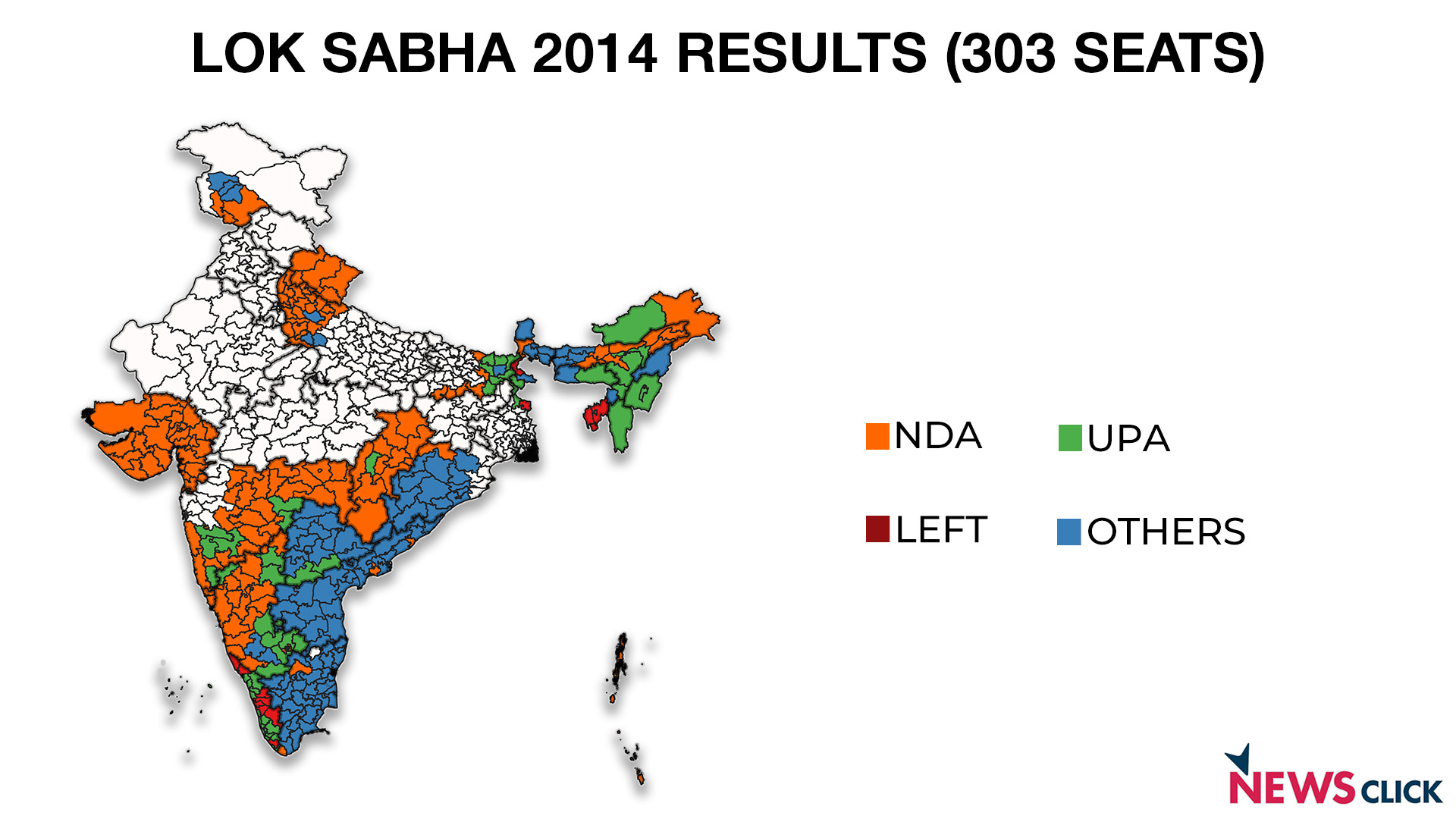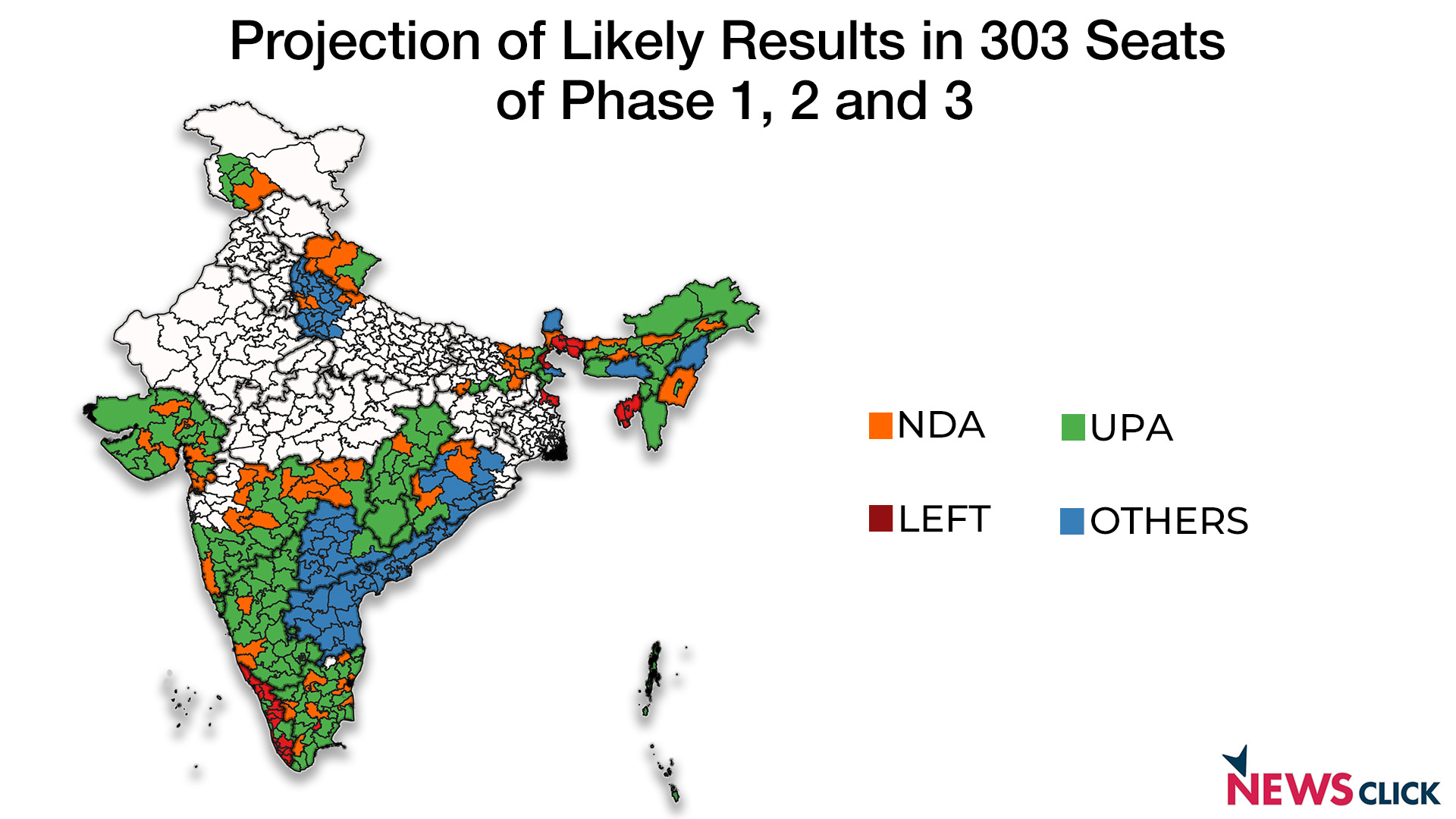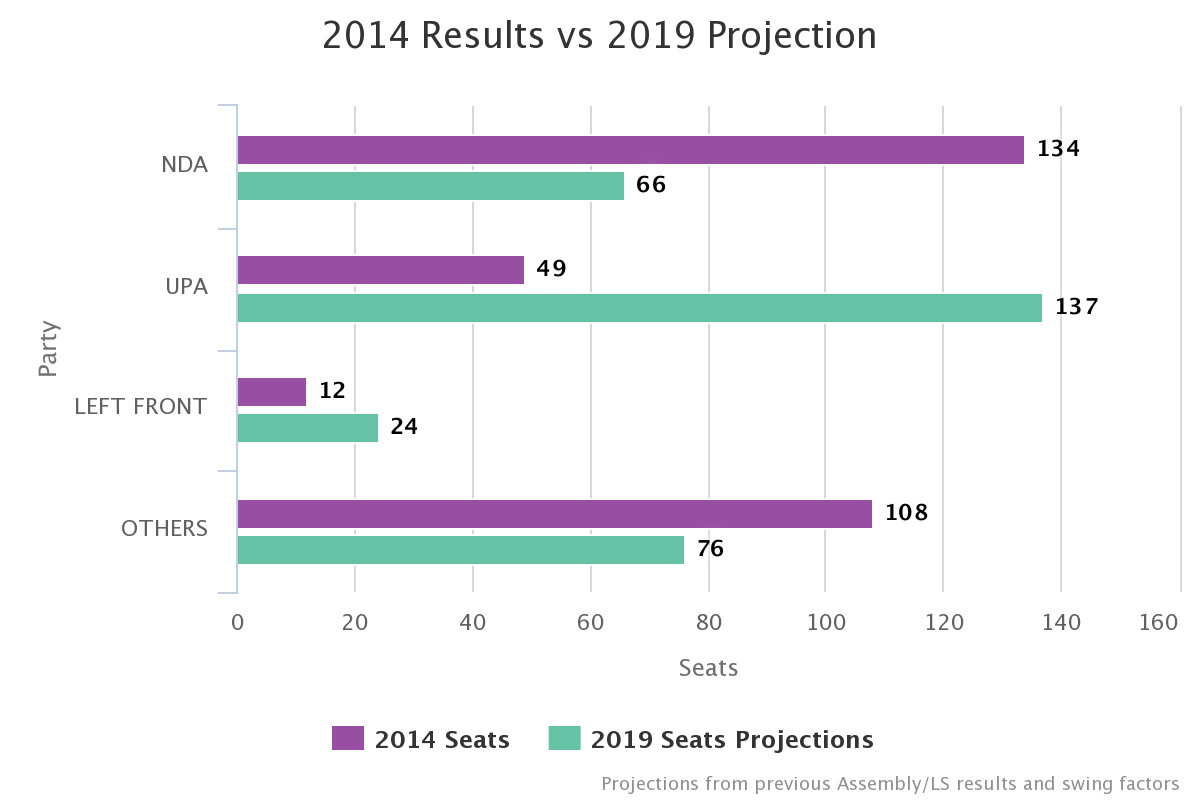Polling for 303 seats has been completed and new alliances along with anti-incumbency is likely to cause this steep decline for the ruling BJP-led coalition.

A strong feeling of discontent with the Narendra Modi government’s policies in the last five years, new alliances and alignments among Opposition parties and breaking away of some National Democratic Alliance (NDA) partners is likely to cause heavy damage to the Bharatiya Janata Party-led NDA in the 303 seats for which polling was done in the first three phases of ongoing Lok Sabha elections. The NDA tally is projected to drastically dip from 134 seats in 2014 to just 66 this year, while the Congress-led United Progressive Alliance seats are likely to go up from 49 last time to 137 currently.These projections are based on the following: votes got in the last Assembly election results (except in West Bengal where 2014 general election results were used) mapped on to Parliamentary constituencies; current alliances; and state-wise swings of votes away from the ruling party in the state projected as a balance of discontent with/support to contending parties in the state. In general, disaffection with the Modi government at the Centre is projected as causing various degrees of swings depending on local factors. The analysis and projection was done by Newsclick’s data analytics team.


In the table below, fragmentation of Opposition parties in 2014 is evident with the huge list of others. This is also because many of them were with the NDA in the previous five years but have since left the ruling alliance. Examples of such parties are the Telugu Desam Party and People’s Democratic Party, besides various regional or even sub-regional outfits. Many parties in the North-East have contested this election independently although they were part of NDA throughout.

One of the biggest results of a new alliance trumping the BJP is emerging from Uttar Pradesh, where the ruling BJP is getting roundly defeated by the Gathbandhan (Alliance) of Samajwadi Party, Bahujan Samaj Party and Rashtriya Lok Dal. In 2014, the BJP had won 25 of the 26 seats that have completed polling in three phases but this time it is slated to plummet down to just five seats.
Another big defeat awaits the NDA in Tamil Nadu where the AIADMK had swept the last elections and later supported the NDA, but this time the DMK- led alliance (which includes the Congress and Left parties besides others) is set to notch up a significant victory getting 28 of the 38 seats that have gone to polls, with election in one seat postponed.
Interestingly, many of the parties listed as ‘Others’ in the maps and table are likely to oppose the NDA in the post-poll scenario. This includes the Gathbandhan in UP, projected at getting 21 seats till now, and the TDP in Andhra Pradesh, projected at eight seats. In West Bengal, the Trinamool Congress (AITC) is getting just one seat out of the nine for which elections have been held. In the subsequent phases, the remaining 33 seats are expected to tilt more towards this party and it too will stand in opposition to NDA, going by current stances.
What these projections do indicate is the failure of the Modi-led BJP attempt to use a synthetic version of nationalism and security in order to gloss over its failures in the past five years, especially on ameliorating farmers’ distress, on the jobs front, on curbing corruption and black money and even on national security. It is more than likely that the forthcoming phases of polling (four phases still to go) the trend is going to continue, and the NDA will end up far short of the majority mark of 272 in the Lok Sabha.
[Data analysis by Peeyush Sharma and mapping by Glenissa Pereira]
Courtesy: News Click
